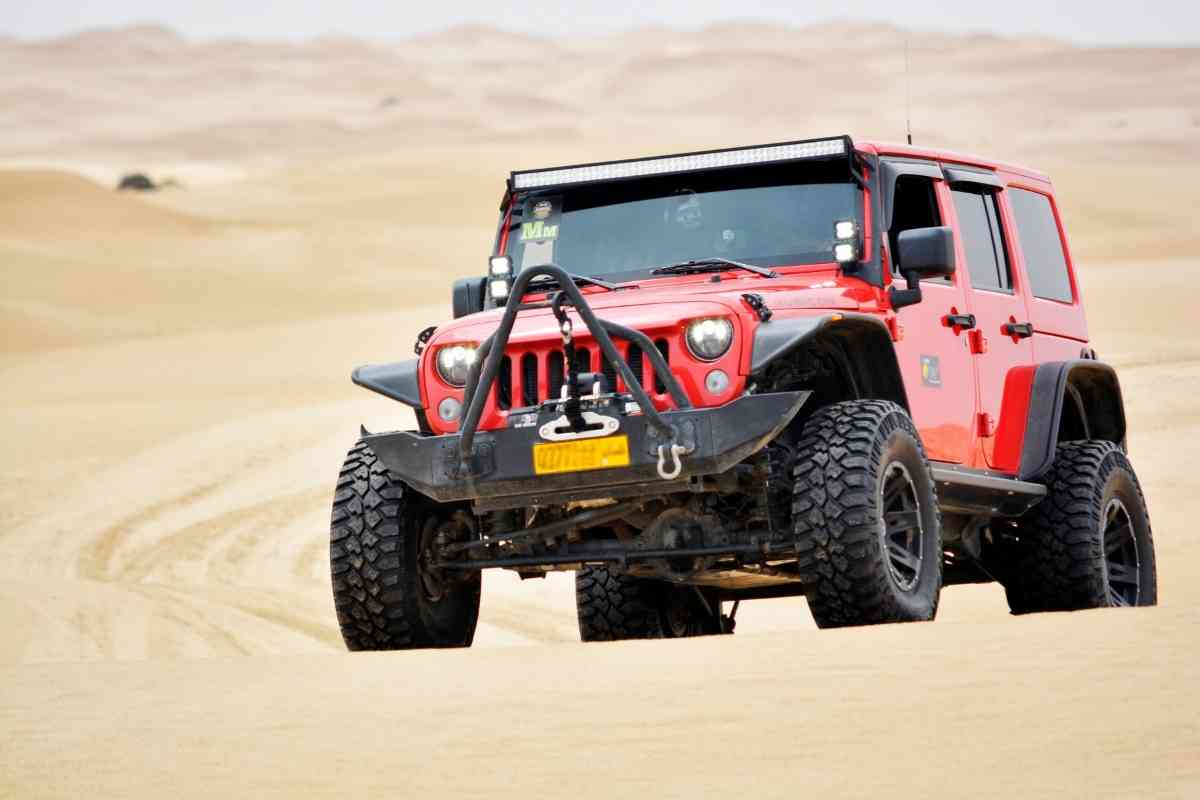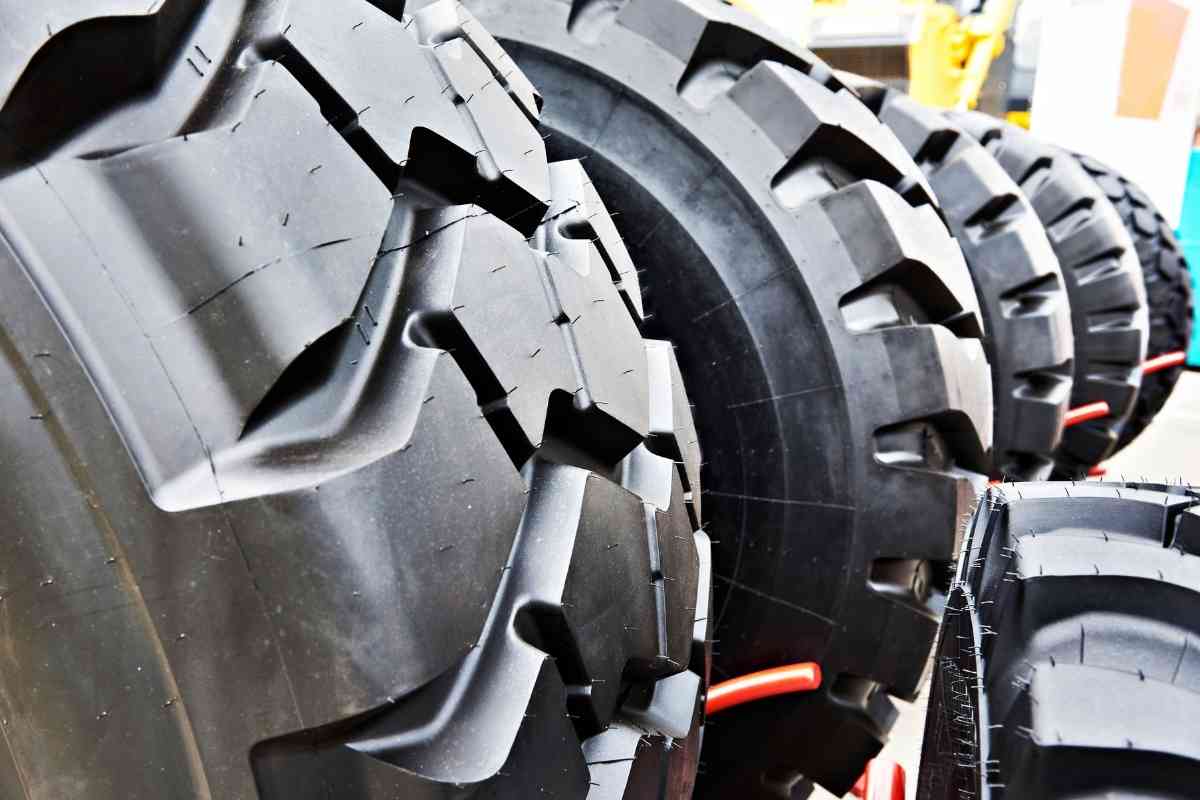Is There a Big Difference Between 33 and 35 inch Tires? (Explained!)
When I was hardpressed to upgrade my big tires, I couldn’t tell if there was a big difference in which one I chose.
How big of a difference do 2 inches of tire clearance make? Let’s find out the difference between 33 and 35 inch tires, and how they can impact your vehicle.

When it comes to big lift tires, is bigger always better? The question isn’t so straightforward. For one, the additional size could hamper your performance.
Is There a Big Difference Between 33 and 35 inch Tires?
Depending on your vehicle’s intended function, there can be a big difference in performance between 33-inch tires and 35-inch tires.
Even though a 35-inch tire only nets one extra inch of clearance at the axle, this 1 inch can have more of an effect than you think. Many technical issues come into play even though the size of the tires is similar.
There are a lot of factors that can affect off-road performance for your vehicle, some more than your tire size and some not as much.
Big tires can be a make or breakpoint on an obstacle, and although the tire size difference is slight, the effect they can have is not.
How? Read on to find out!
The Similarities and Differences Between 33-inch and 35-inch Tires Explained
Your tires are one of the critical points of failure on an offroading journey.
Ensuring you know the specs of your tires is essential to succeeding when things go wrong.
To determine the difference between 33 and 35 inch tires, you will also consider how similar they are for the differences to be noticeable.
Similarities of 33-inch and 35-inch tires
No matter what size you are upgrading to, there will be some definite benefits your tires will provide.
The aesthetics of big tires will be as prevalent in a 33-inch tire as they are in 35-inch tires.
Benefits
To any general onlooker, these tires will appear big and give you that “big truck” look you are going for, so you don’t have to worry about losing out by picking a 33-inch or 35-inch tire.
Similarly, both tires are going to give you enhanced ground clearance well and above your normal-sized truck tires.
This effect means that by elevating your car’s height off the ground, you will increase the distance between the road surface and the lowest point of your vehicle.
The physics of big tires means that you will be less likely to get stuck on ramps, potholes, and weather obstacles like mud and snow.
These benefits will even help with your regular route and highway driving.
Another upside both tires share is that since the underside of your vehicle is higher up, your vehicle is at less risk of superficial damage and damage resulting from road accidents.
Upsizing tires helps maximize the surface area your tires are on the road, with several key advantages.
This extra surface area will increase the traction of the tires, which allows your brakes to kick in faster, improving your overall braking reaction ability and capability.
Cornering is also improved with a bigger tire.
Since more of your tire is impacting the road at a given time, it is much harder to oversteer a turn, and your tires want to go where they are supposed to go.
Bigger tires will help immensely with sharper turns.
The higher height allows drivers to see more things on the road and at more angles.
This increased visibility will translate into increased control over your vehicle.
Towing and towing capacity is helped by big tires as well.

Disadvantages
Larger tires mean a more significant effort will have to be used to steer them.
It is merely the exchange necessary to accommodate their larger size.
One consequence of this extra effort is that tires wear down significantly faster.
The force required to turn big tires means that more times, the tire is scraped against a driving surface and for longer.
Tire scraping while turning is a major factor in tire wear and tear. This wear and tear worsens when the design is more for offroading and you drive on the road.
You can extend the life of your tires by regularly rotating them; however, you will still not get the same mileage out of them that you will a standard-sized tire.
Fuel Efficiency is going to diminish with the use of larger tires. Your vehicle’s engine simply has to do more work, and that work will require more fuel.
This enhanced fuel consumption will cause more wear to your vehicle over time and increase the amount you have to spend on gas compared to the standard tire.
This compounds on top of the already more expensive fuel cost associated with off-roading since off-roading vehicles already have a worse fuel economy for much the same reasons.
Driving Difference between 33 and 35 Inch tires
The 33-inch tire represents a breakpoint for some features on some vehicles.
It will be universal in between vehicles, but there are a lot of common problems that 33-inch tires avoid that will sometimes be a problem for 35-inch tires.
One difference is that 33-inch tires have a relatively accurate speedometer. It is crucial to have a reliable speedometer for obvious reasons like speeding.
The speedometer is also responsible for recording the mileage, which can lead to problems down the line if it isn’t accurate.
35-inch tires, by contrast, can start to have things go wrong with their speedometer up to a tune of about five mph, which, while not super significant, is a breakpoint where it is just enough of a difference to cause an issue.
At higher speeds, the difference in calculation can climb even higher. Not a lot of people consider this, but it’s a key difference between 33 and 35 inch tires.
Another difference is that big tires can cause excessive strain on a vehicle’s drivetrain components.
This problem occurs because larger tires reduce the effective gear ratio.
The tires rotate more slowly to cover the same ground, reducing the mechanical advantage of a drive train.
In effect, more power is required to turn the wheels, so it increases the strain.
33-inch tires are less likely to cause drivetrain malfunctions than 35-inch tires.
35-inch Differences
As mentioned, 35-inch tires have some distinct drawbacks over 33-inch tires.
Cost, wear and tear, and fuel consumption applies in spades to 35-inch tires.
Another drawback worth mentioning is that the differential will require multiple regearing sessions to maintain its performance.
If regular regearing preventative maintenance is not performed on a differential, you will see extra stress affecting the whole vehicle.
This maintenance can sometimes be prohibitively expensive, in the upwards of a few thousand dollars. Out of all, this is the most expensive difference between 33 and 35 inch tires.
All these drawbacks are the expense of the great benefit of 35-inch tires.
35-inch tires are bigger and, by the transitive property of cool tires, are therefore cooler to have.
Also, while they only give a practical 1-inch net height compared to a 33-inch, this is enough to get them over a breakpoint into the next performance tier.
Closing Thoughts On The Difference Between 33 and 35 inch tires
In nearly every category, 35-inch tires have 33-inch tires beat. 35-inch tires have improved traction, stability, and performance compared to 33-inch tires.
The ability to guarantee you will triumph over obstacles that the 33-inch tires cannot overcome is a massive boost of confidence while off-roading and a stress reliever on standard roads.
A 33-inch tire can offroad in a pinch on trails and light terrain; the 35-inch is recommended for extreme off-roading.
The slight inch difference is so significant in off-roading that the recommendation can change so much.
